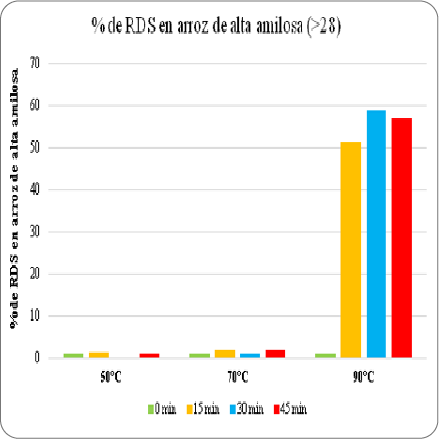Cocción de arroz: eficiencia energética, valor nutricional y metales pesados
DOI:
https://doi.org/10.24054/bistua.v19i2.1016Keywords:
cocción de arroz, eficiencia energética, valor nutricional, metales pesadosAbstract
Rice is one of the most produced and consumed cereals in the world, because of its caloric intake in the diet of human beings. Starch is the main component of rice grain, but it is also an important source of minerals, fibers, and vitamins. Rice can also contain significant levels of toxic metals. There are several household cooking methods, and the most common ones are boiling, electric rice cooker, pressure cooking, and microwave cooking. The energy efficiency of the different methods was evaluated, finding that the cooking process using an electric rice cooker achieved savings of 35 – 40 % compared to the microwave and traditional methods. Ohmic cooking turned out to be the fastest cooking method, with a time of 5 - 7.5 minutes. Different processes could be applied to this cereal before its consumption, which can affect the mentioned compounds’ content. The previous grain washing generates an essential and toxic minerals content reduction, as well as vitamins B1, B2 and phytic acid. The pre-soaking did not generate significant changes in the content of vitamin B2, minerals and phytic acid. Microwave cooking generated lower vitamin and phytic acid decrease than high pressure cooking. The pre-soaking method followed by cooking generated not only a heavy metal reduction, but also, an essential mineral reduction. Finally, other authors studied the effect of cooking time and temperature in the variability of rice starch digestible fractions. They found that changing temperature from 50 to 90 °C, generates the increase of rapidly digesting starch fraction.
Downloads
References
FAO.. Food Outlook - Biannual Report on Global Food Markets. Food Outlook, 1. Rome, 2020. Acceso 25 de septiembre de 2020. https://doi.org/10.4060/ca9509en.
Kusano M., Fukushima A., Fujita N.O., Kobayashi M., Oitomen F., Ebana K., Saito K. Deciphering Starch Quality of Rice Kernels Using Metabolite Profiling and Pedigree Network Analysis. Molecular Plant 5(2) (2012) 442–451.
Galán M.G., Drago S.R. Food matrix and cooking process affect mineral bioaccessibility of enteral nutrition formulas. Journal of the Science of Food and Agriculture 94(3) (2014) 515-521. https://doi.org/10.1002/jsfa.6280.
Liu K., Zheng J., Wang X., Chen, F. Effects of household cooking processes on mineral, vitamin B, and phytic acid contents and mineral bioaccessibility in rice. Food Chemistry 280 (2019) 59-64. https://doi.org/10.1016/j.foodchem.2018.12.053.
Kennedy G., Burlingame B. Analysis of food composition data on rice from a plant genetic resources perspective. Food Chemistry 80(4) (2003) 589-596. https://doi.org/10.1016/S0308-8146(02)00507-1.
Gibson G.E., Hisch J.A., Cirio R.T., Jordan B.D., Fonzetti P., Elder J. Abnormal thiamine-dependent processes in Alzheimer's Disease. Lessons from diabetes. Molecular and Cellular Neuroscience 55 (2013) 17-25. https://doi.org/10.1016/j.mcn.2012.09.001.

Additional Files
Published
Versions
- 2021-12-22 (4)
- 2022-02-05 (3)
- 2021-12-21 (2)
- 2021-12-21 (1)
Issue
Section
License
Copyright (c) 2021 © Autores; Licencia Universidad de Pamplona.

This work is licensed under a Creative Commons Attribution-NonCommercial-NoDerivatives 4.0 International License.
© Autores; Licencia Universidad de Pamplona





